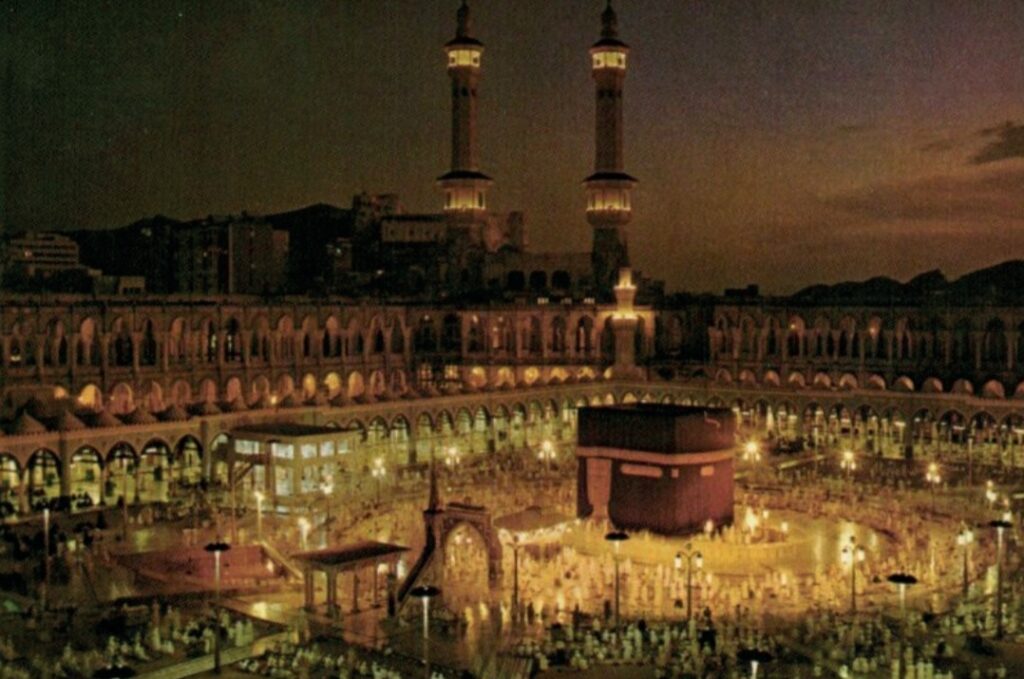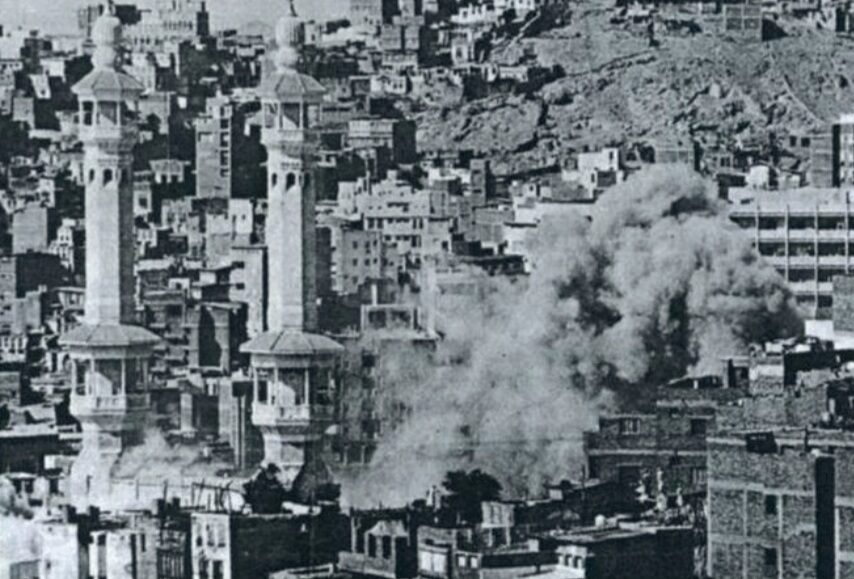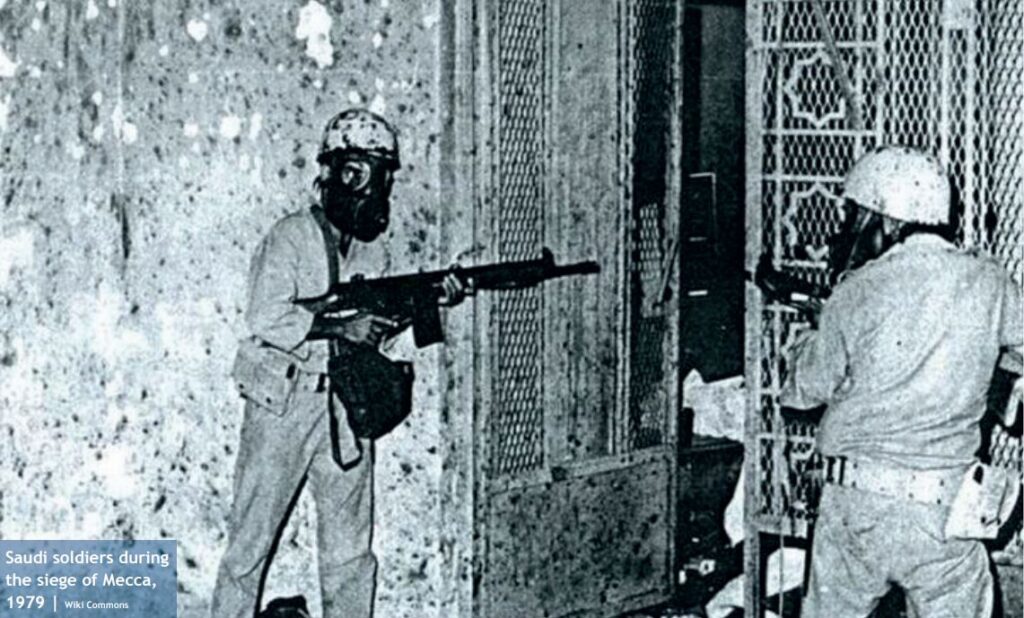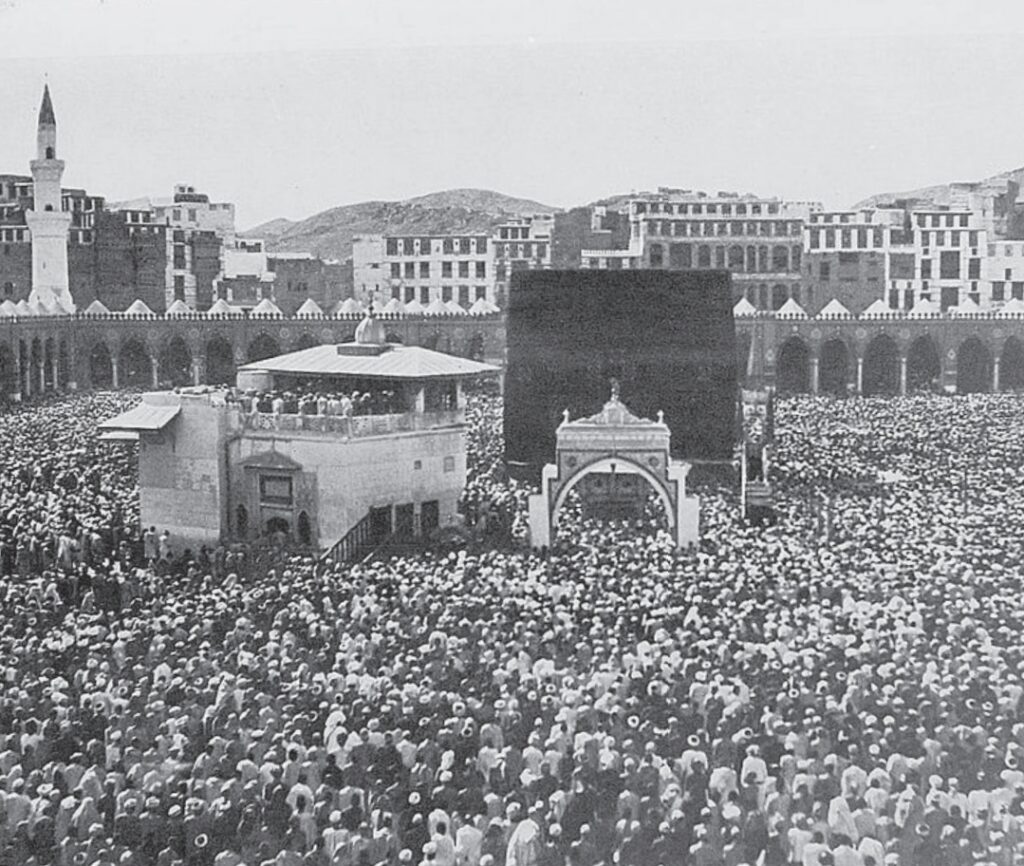Jalees Ahmad, Al Hakam

In a world where violence is an everyday occurrence and news travels around the world faster than the Parker Solar Probe, a person becomes somewhat accustomed to always hearing the terrible news. Flicking through world events, a common theme found almost in all countries is a gloomy and miserable state of affairs. From decade-defining moments to unforgettable events, many countries have seen several dark days.
Looking back a hundred years ago, when Muslims around the world were waiting (as some are today) for the coming of a messiah who would spread bloodshed, one becomes astonished at this concept of the Messiah and is deeply hurt by the false propaganda spread by Muslim clerics.
This false, deep-seated notion that a messiah would come solely to spread bloodshed has taken root and has done more harm than good. It has given rise to the notion that one may act out of violence to attain political power, influence and status of any kind. This deception of a cruel messiah has caused much harm to the Muslim ummah.
It was prophesied by the Holy Prophet, Muhammad, peace and blessings of Allah be upon him, that in the Latter Days, Muslims would deviate so far from the teachings of Islam that they would guide others according to principles not practised by the Holy Prophetsa. With regard to such people, the Holy Prophetsa said:
قَوْمٌ يَهْدُوْنَ بِغَيْرِ هَدْيِ
“There will be some people who will lead [people] according to principles other than my tradition”. (Sahih al-Bukhari, Kitab al-Munaqib, Hadith 3606)
With the rise of false notions, such as the bloodthirsty messiah – a messiah who will go around spreading violence and forcing people to accept him and wage war – some Muslims have created an environment where they have convinced themselves that violence is the answer.
It is such behaviour that causes heretic episodes like the Grand Mosque seizure of 1979. A group of extremists, attempting to overthrow Al Saud (the House of Saud) took over Masjid al-Haram. No matter what one’s agenda may be, creating disorder in Masjid al-Haram cannot be tolerated by any Muslim. In fact, causing any violence in any place of worship is forbidden in Islam.

Alluding to the incident of the Grand Mosque seizure, Hazrat Mirza Nasir Ahmad, Khalifatul Masih III, may Allah have mercy on him, in his Friday Sermon of 23 November 1979, said:
“You [Jamaat members] all know that the last few days have been extremely disturbing and difficult for me, as it has been for you. An unexpected incident has occurred. Miscreants entered Masjid al-Haram and created the conditions for disorder”.
Huzoorrh stated that he spent the last few days praying to Allah the Almighty, seeking His mercy and imploring that may no incident like this ever occur in the House of Allah and may no one ever have the nerve and audacity to do such a thing again. Throughout his sermon, Huzoorrh explained the special status of Masjid al-Haram.
The House of Allah used for political gains
On 20 November 1979, a person by the name of Juhayman ibn Muhammad ibn Sayf al-Otaybi led the siege of Mecca and attacked the mosque and worshippers. The long-awaited Mahdi had arrived to restore peace, he said ironically as he invaded the Grand Mosque. He said that his brother-in-law, Muhammad Abdullah al-Qahtani, was the awaited Messiah. Muhammad Abdullah al-Qahtani was with Juhayman al-Otaybi during the siege, along with 600 other rebels.
These miscreants went to the birthplace of Islam and, in calling Muslims to obey Muhammad Abdullah al-Qahtani, the “self-styled messiah” (as coined by the newspaper The Victoria Advocate), took worshipers hostage, killing many servicemen and other forces who tried to prevent this horrific episode from escalating further.
This incident lasted two weeks and shocked the Islamic world. The House of Allah, the symbol of unity and peace, was being used as a subject for political gains.
With regard to Juhayman al-Otaybi, American professor David Commins, in his book, Wahhabi Mission and Saudi Arabia, wrote that in the 1970s, Juhayman al-Otaybi joined the Islamic University of Medina where he attended courses on religion. In 1976, he attracted “official suspicion” when he issued a pamphlet in which he condemned Al Saud.
“Since the 1950s, anti-monarchy groups had come and gone, so, in that respect, Juhayman fitted a familiar pattern. But he broke new ground when he blamed the Wahhabi religious establishment for twisting Islam to prop up an illegitimate regime. Two years later, security forces arrested him and about 100 others for interrogation.” (Wahhabi Mission Saudi Arabia, p. 164)
The siege
The month of Hajj had just finished. One can only imagine how many pilgrims were there preparing for their journey back home. The siege of the Grand Mosque was planned for 1 Muharram, the opening of the year, the first day of the 14th century, by Juhayman al-Otaybi.
As every new day and morning brings a feeling of comfort and peace, at around 5:30 in the morning of 20 November 1979, this peace was disturbed.

Juhayman al-Otaybi, with his supporters, entered the mosque equipped with guns and rifles hidden under their garments. Some reports have stated that they made use of a coffin in which they had hidden their weapons. (It was customary for worshipers to bring coffins of their relatives and loved ones who had recently passed away.) 50,000 worshippers were present in the mosque.
As the siege began, rifles and handguns were quickly handed out among the rebels. Juhayman al-Otaybi, there and then, declared his brother-in-law, Muhammad al-Qahtani, as the long-awaited messiah. The sound of gunshots echoed, killing some of the guards and worshippers who were caught in the crossfire.
During this mayhem, the imam, who was there for the Fajr prayer, succeeded in escaping and managed to inform the authorities. Not knowing the best method to respond to these extremists, officials were puzzled. During this time, Juhayman al-Otaybi had managed to convince many that the Mahdi had actually arrived. (Daniel Benjamin and Steven Simon, The Age of Sacred Terror)
Covering this shocking news, the newspaper, The Victoria Advocate, reported:
“The attack on the mosque occurred in the early hours of last Nov. 20 as the Muslim world was celebrating the advent of the 14th century of the Islamic lunar calendar […] The gunmen sneaked into the mosque during the dawn prayers, held about 50 hostages. Including some Saudi government officials, and demanded at gunpoint that their leader Qahtani be recognized as the messiah.” (The Victoria Advocate, 10 January 1980, p. 47)
Professor David Commins, in his book, Wahhabi Mission Saudi Arabia, describing this incident, writes:
“In the days before the Muslim New Year, members of Juhayman’s group trickled into Mecca and blended into the throngs as the annual pilgrimage wound down. After taking control of the mosque, Juhayman and his band hunkered down, taking advantage of the Haram’s intricate network of subterranean passages and chambers as well as Al Saud’s reluctance to order a full-scale assault when hundreds of innocent Muslims were caught in the middle.” (Wahhabi Mission Saudi Arabia, p.167)
Al Akhbar, a newspaper based in Cairo, reported that 600 people were involved in the takeover.
With rifles and weapons finding their way into the Grand Mosque, one’s mind is compelled to think that just as this siege was a strategic plan, so too was the plan of the announcement of Muhammad al-Qahtani’s claim. Nobody plans to become a messenger or a messiah. The chosen ones of God are divinely appointed. Thus, this goes to show how these heretics and fanatics used religion for their own political agenda.
When messengers are sent by Allah, they arrive to bring about peace. Men cannot force a heavenly intervention. Salvation is not something that can be forced into motion.

The Belfast Telegraph, on 21 November 1979, reported:
“The seizure of the mosque, the holiest shrine for the world’s 600 million Moslems, was apparently timed to coincide with yesterday’s opening day of the year 1400 in the Moslem calendar.” (Belfast Telegraph, 21 November 1979, p.1)
On 23 November 1979, Coventry Evening Telegraph, reported:
“Saudi Arabia said today that its security forces had taken complete control of the Grand Mosque at Mecca, Islam’s holiest shrine, and were arresting the last of the attackers who stormed it three days ago.” (Coventry Evening Telegraph, 23 November 1979, p. 1)
Juhayman al-Otaybi and his supporters remained in the mosque for nearly a week before they finally surrendered. The Belfast Telegraph, on 4 December 1979 reported the surrender of these gunmen who stormed the mosque. The Belfast Telegraph wrote:
“The last group of rebel Moslem gunmen who stormed the Grand Mosque in Mecca two weeks ago, have surrendered to the Saudi security forces”. (Belfast Telegraph, 4 December 1979, p.1)
It was reported that among the hajis (pilgrims), there were 26 casualties, from the government security forces, 127 died and 451 were wounded. 75 attackers were killed in battle. Muhammad Abdullah al-Qahtani, the self-proclaimed Mahdi, was killed during this siege by Saudi troops.
On 9 January 1980, Evening Express, a newspaper based in Aberdeen, under the title, “Saudis behead 63 for attack on mosque”, reported:
“Sixty-three people were beheaded in Saudi Arabia today for their part in an attack last November on the Grand Mosque in Mecca.
“The Government announced the executions were carried out at dawn in eight cities under a decree issued by King Khalid.
“The Interior Ministry said 41 of those executed were Saudis.
“The others were 10 Egyptians, six South Yemenis, three Kuwaitis and one person each from North Yemen, Sudan and Iraq.” (Evening Express, 9 January 1980, p. 3)
What ignites such events?
What gave rise to such a catastrophic event? Why did Juhayman al-Utaybi and Muhammad al-Qahtani deem it necessary to forcibly and inhumanely attack the House of Allah?
Those who deviate from the essence of Islam give birth to beliefs and doctrines in line with their own nature. Notions of violence and belief in the advent of a “bloodthirsty” messiah only deepen the division within the Muslim ummah and resultantly raise fanatics who act of their own accord for personal interests. Falsely spread beliefs create disorder and fuel gloomy episodes like this.
This page in Islamic history shows how matters can elevate without correct guidance and a moral compass. It further serves as a lesson and a need for unity within the Muslim ummah to ensure that despite sectarian differences or understanding of the right purport of Islamic prophecies and teachings, the holy sites of Islam are safeguarded at any cost. In order to protect the sanctity and glory of Islam, it is necessary for Muslims to unite.
This call of unification was made on many occasions by the Promised Messiahas and is still being made by the Khalifatul Masih.
This incident was not too long ago (42 years) and it just goes to show the need for perfect guidance and correct implementation of the true Islamic teachings. When man drifts away from the true teachings of religion, he often gives way to ideologies based on his own yearnings and hijacks religion to justify his needs.
The perfect teachings of Islam serve to guide mankind. It is like a bright torch handed down to man to guide us. If man continues to focus on the torch, and not the light it emits, he will find himself wandering an endless path, forever lost.

